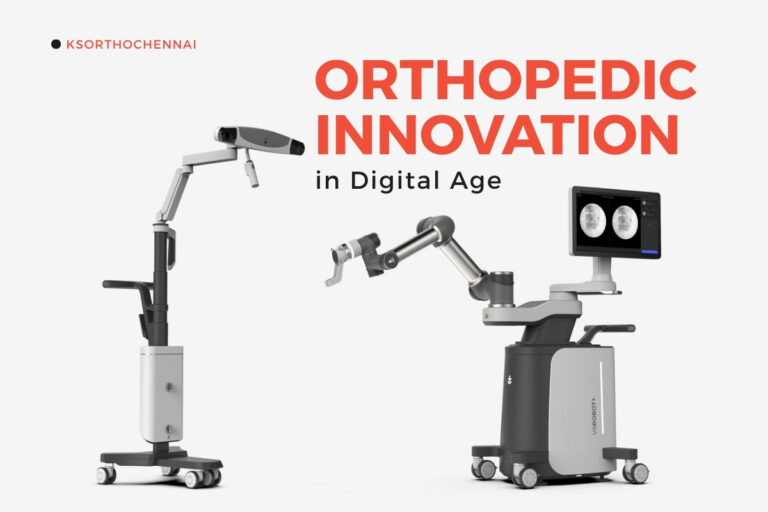Orthopedic Innovation in the Digital Age: How Technological Advancements Are Shaping the Future of Personalized Medicine

Orthopedics is undergoing a dramatic transformation driven by technology. From robotic surgery to artificial intelligence and 3D printing, the field is shifting toward precision-based, patient-specific care. These innovations are not only improving clinical outcomes but also reshaping how patients and providers experience orthopedic treatment.
The Rise of Technological Innovation in Orthopedics
The evolution of orthopedics is marked by a steady shift from conventional surgical practices to digitalized, data-driven solutions. Today, technological innovation is a cornerstone of orthopedic research and patient care. Surgeons and healthcare providers are leveraging advanced systems to enhance accuracy, reduce risks, and promote faster recovery. Global trends point toward a future where technology is seamlessly embedded in every stage of treatment.
Robotic-assisted surgery is redefining how complex procedures are performed. These systems provide:
Millimeter-level accuracy in joint replacements and spinal surgeries
Smaller incisions with reduced blood loss
Faster rehabilitation and shorter hospital stays
By integrating with imaging systems, robotic platforms ensure that each procedure is tailored to the patient’s anatomy, bringing unprecedented levels of personalization.
“Technology is no longer just a tool – it is the backbone of future-ready orthopedic care.”
Artificial Intelligence in Healthcare and Orthopedic Diagnosis
Artificial intelligence is becoming a powerful ally for orthopedic specialists. AI applications include:
Advanced imaging analysis that detects fractures and anomalies earlier
Predictive analytics that forecast patient outcomes and prevent complications
AI-driven rehabilitation tools and wearables that monitor recovery in real time
This level of insight supports physicians in making faster, data-driven decisions while improving patient trust.
3D Printing in Orthopedics – Customized Care for Every Patient
3D printing technology enables orthopedics to deliver truly personalized medicine:
Custom-designed implants and prosthetics for a perfect anatomical fit
Preoperative surgical models that allow rehearsals before entering the OR
Cost-efficient production of patient-specific devices
These solutions not only improve outcomes but also make advanced orthopedic care more accessible.
Virtual Surgical Planning for Personalized Medicine
Virtual surgical planning is revolutionizing how orthopedic procedures are prepared. By using advanced imaging and simulation software, surgeons can map out operations in a digital environment before entering the operating room. This enhances preoperative accuracy and reduces the likelihood of complications. Virtual planning ensures that surgeries are tailored to each patient, leading to better alignment, stability, and functional outcomes. Case studies have already demonstrated significant improvements in both efficiency and patient satisfaction.
Branding Orthopedic Innovation for the Future
The adoption of robotics, AI, 3D printing, and VSP is not just a medical evolution—it is a branding opportunity. Clinics and hospitals that embrace these technologies:
Position themselves as leaders in orthopedic innovation
Build stronger patient trust by showcasing transparency and precision
Create a competitive edge in an increasingly tech-driven healthcare market
Conclusion
Orthopedics in the digital age is powered by technology that improves accuracy, reduces risks, and customizes care for every patient. By leveraging robotic systems, artificial intelligence, 3D printing, and virtual planning, orthopedic practices can deliver on the promise of personalized medicine while shaping a new era of healthcare.
Book a consultation at KS Ortho Clinic Chennai and let our orthopedic experts guide you — now with AI-assisted support to make your care more personalized and informed.
Frequently asked questions
How is technology transforming the future of orthopedic surgery?
What are the benefits of robotic-assisted orthopedic surgery?
How does artificial intelligence support orthopedic care?
Why is 3D printing important in orthopedics?
What is virtual surgical planning and how does it benefit patients?
Search
Category
popular post
-
Understanding Spine & Back Issues: When to Visit an Orthopaedist
-
Why Physiotherapy Matters After Orthopedic Surgery: A Deep Dive
-
3D Printing and Virtual Surgical Planning: The Next Step in Personalized Orthopedic Medicine
-
How Robotic Surgery and Artificial Intelligence Are Redefining Orthopedic Innovation
-
Orthopedic Innovation in the Digital Age: How Technological Advancements Are Shaping the Future of Personalized Medicine

Why Choose
Dr. Sarath Babu Ortho Clinic in Madipakkam?
When it comes to knee replacement surgery, choosing the right clinic and doctor is critical. Here’s why patients trust Dr. Sarath Babu Ortho Clinic Madipakkam:
- Expertise: Years of experience in handling complex knee surgeries.
- State-of-the-Art Facilities: Advanced equipment for precise and effective procedures.
- Patient-Centric Approach: Tailored treatment plans and compassionate care.
Looking for the best ortho doctor near you? Dr. Sarath Babu ensures you’re in safe hands throughout your recovery journey.

